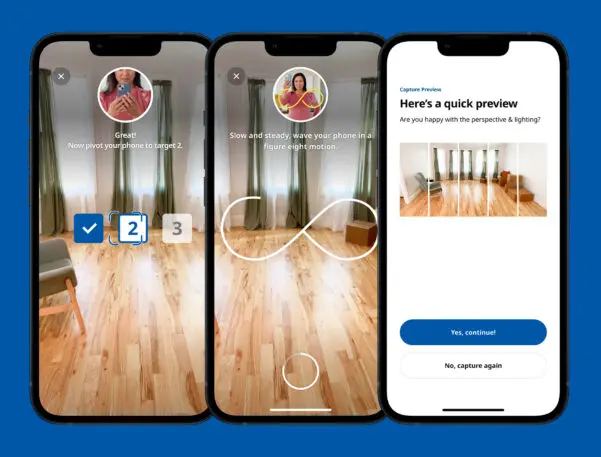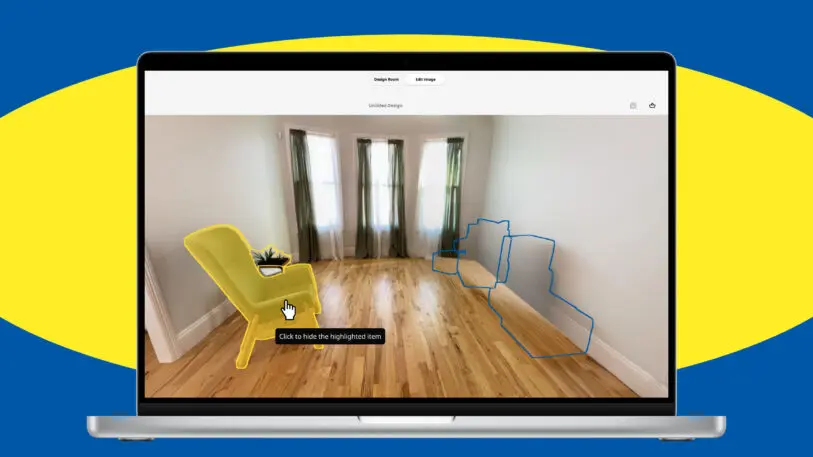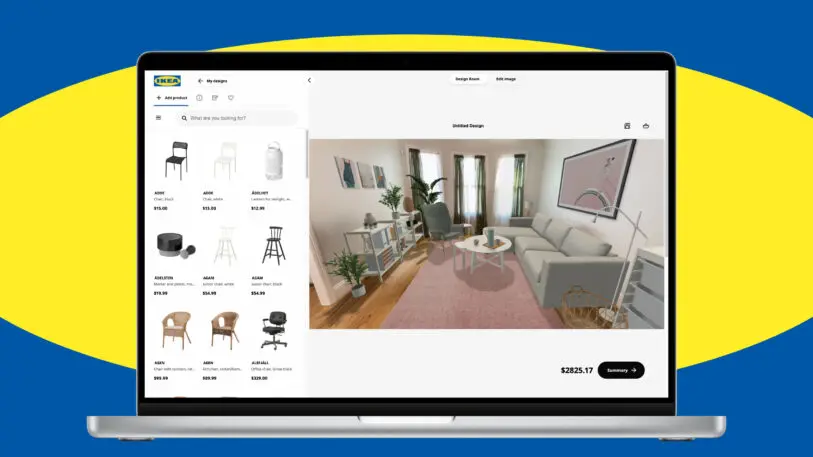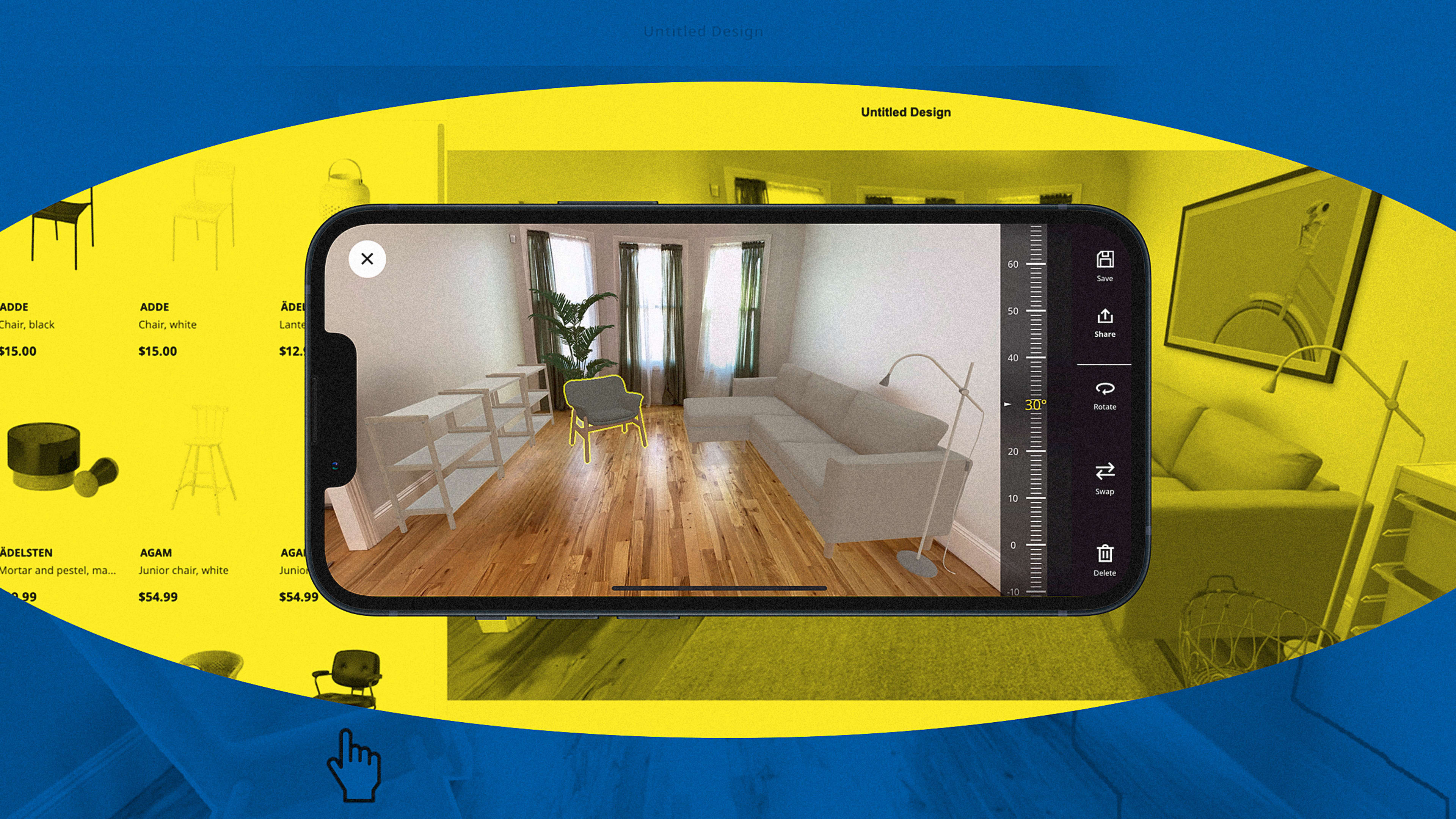Ikea just deleted my dog. Well, I guess I deleted my dog, with Ikea’s help.
My 75-pound golden retriever wears a cone of shame near my front door. My children play Switch on our leather couch. A shoe cabinet—a piece of furniture I don’t really like but has proven indispensable for my family’s clutter—sits in the background, quietly judging the scene.
[Image: Ikea]And then, with a single tap, they all disappear, leaving me with the same empty room as when I first bought the house. I’ve just scanned my living room with Ikea’s updated app, which relaunches today (alongside a similar experience on the Web). While deleting my family is admittedly a disquieting sensation, it makes a lot of room for my imagination. As I drag new Ikea furniture into the space—positioned through augmented reality—I must admit, This is a pretty helpful way to redecorate a room without all the weight of past decisions!
[Image: Ikea]Most app updates are forgettable. But Ikea’s is powered by a new AI feature dubbed IKEA Kreativ, which promises to clear out any room in your house, making boxes, planters, and furniture disappear so you can build a picture-perfect room without simply relying on your imagination.
The process of getting here wasn’t instantaneous. First, I had to take several photos of the space, lining up the edges of different ones, like stitching together a panoramic image. Then the app asked me to wave my camera in a strange figure eight—and a larger figure eight—and then to take a few steps to my right to do it all again. With each request Ikea made, I admittedly lost a little confidence that this would even work. And once I was done, I still had to wait another 10 minutes for processing.


“People often buy [furniture] without context and rely on their imagination,” said Thomas Fenrich, VP, digital product, Ikea Group U.S., via email. “In fact, 87% of our customers say that they want to feel good about their home, but only half of them know how to do it.”

As the company began consolidating its digital products a few years ago, Place’s technology was rolled into the main Ikea app. In 2020, Ikea parent company, Ingka Investments, acquired Silicon Valley AI startup Geomagical Labs to improve its core AR technologies. As a direct result of this acquisition, you can now erase a dresser in your Ikea app but still have a clean wall when it’s gone instead of a black hole. (The AI is clever enough to not just see walls, flooring, and lighting, but also actually use that information to create new flooring and walls where furniture otherwise stands, generating the illusion of an empty space.) In the future, Ikea says the app will be able to help us update wall colors, mount things on walls and ceilings, and even collaborate with others on designs.
When I ask Fenrich how the new app may impact Ikea’s bottom line—will it eliminate some returns if people have a better idea of how a couch looks in their space before buying it?—he sidesteps the question, insisting that it’ll make Ikea “more affordable, accessible, and truly sustainable.”
In any case, Ikea’s new app is an impressive system, especially since once you place all the new furniture and accessories, you can add these items to checkout, right in the app. In the past, Ikea’s visualization tools were decoupled from its shopping carts. Now, the company is blurring the lines between inspiring a purchase and making one.
Recognize your brand’s excellence by applying to this year’s Brands That Matter Awards before the early-rate deadline, May 3.
